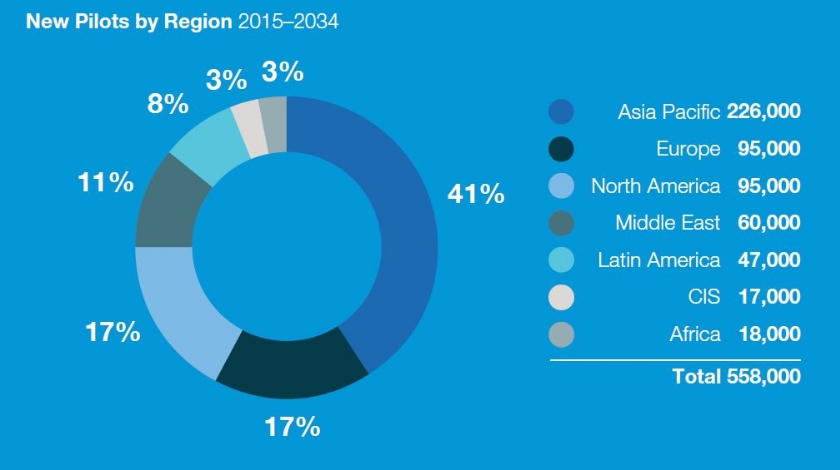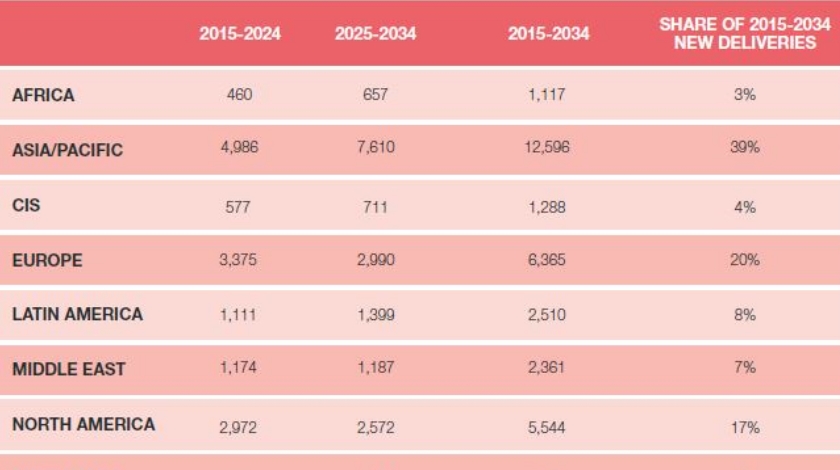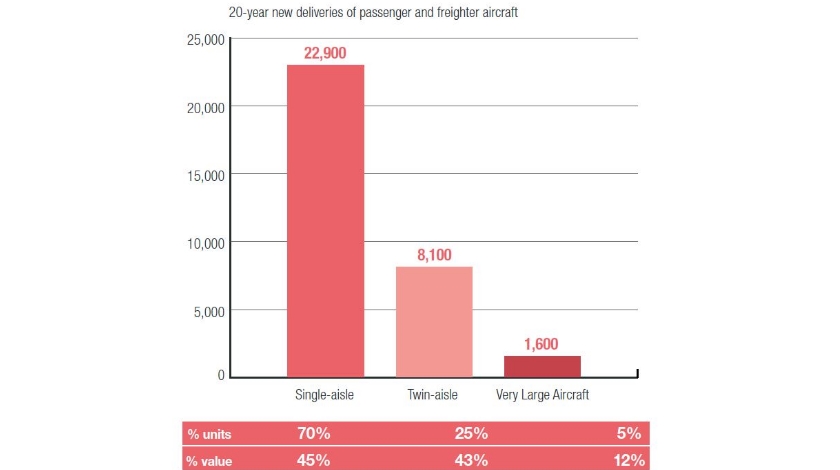Photo: gevme.com
Reading Time: 4 minutesToday we can easily see how the emerging economies are expanding and becoming more stable. It is just a question of time when the people from those countries will be able to afford and use the benefits of aviation. The airlines and manufacturers of flying machines from over the world are aware of it and are trying to shape their strategies for the upcoming demand in aviation industry. That’s why airlines take delivery of tens of thousands of new commercial jetliners over the next 20 years. But without the pilot inside and maintenance on the ground the airplane becomes just a big metal construction. Tell your kids to get pilots licenses, because this could be the career of the 2020s and 30s.
Rising demand for commercial pilots
The Boeing projects that 558,000 new commercial airline pilots and 609,000 new maintenance technicians will be needed to fly and maintain the world’s fleet over the next 20 years. The U.S. airlines are already facing the early stages of a pilot shortage that could boost labor costs and even constrain growth.
Although Asia Pacific remains the region with the highest demand— 40 percent of the world’s required pilots and technicians. Other parts of the world will see the big increase of demand for skilled aviation specialists too — regions like Middle East or Latin America are going to be the hot spots for aviation industry.

As you can see from the graphic, the largest growth in pilot demand is planned to be in the Asia Pacific region with 226,000 new pilots. Europe will need about 95,000; North America – 95,000; Middle East – 60,000; Latin America – 47,000; CIS – 17,000 and Africa – 18,000 new pilots.
Meeting this exponential demand will require innovative solutions—focused on new, digital technology—to match the learning requirements of a new generation. The growing diversity of aviation personnel will also require instructors to have cross-cultural and cross-generational skills to engage tomorrow’s workforce.
New deliveries to meet the global economic expansion
Rising demand of the future pilots mean that there must be more airplanes to operate. It means that the world’s fleet should rise in numbers and airlines will have deliveries of the new aircraft. Total new deliveries, both passenger and freighter aircraft are expected to be close to 32,600 aircraft. Nearly 14,000 passenger aircraft will be retired or converted to freighter, to be replaced with more fuel efficient latest generation aircraft. Most deliveries are forecasted for Asia-Pacific with 39% of the demand, or nearly 12,600 aircraft. North America and Europe, more mature markets, will still require 11,900 aircraft (37% of the total deliveries) to meet their airlines’ needs. Combining replacements and the passenger aircraft needed to meet forecast traffic growth, the fleet is expected to more than double and exceed 35,000 aircraft by 2034.

Which type of aircraft will be the most popular among airlines and passengers? When the people from mentioned regions will fly more frequently, they will likely be most familiar with single aisle aircraft types like the Airbus A320 family and Boeing737.

Over the next 20 years 70% of new deliveries will be for single aisle aircraft. Long-haul travel will continue to be characterized by larger aircraft.
Twin-aisle types will represent a quarter of all new deliveries, but 44% of their value. VLAs like the A380 have the smallest share of the deliveries at 5%. These aircraft are very visible today at the world’s greatest airports, and in the future will continue to provide the most efficient way of connecting the “big points“, but as we can see it will not conquer the single-aisle‘s since the most of airports in the world cannot host VLAs because of their characteristics.
It means that the most of future pilots probably will have their type ratings on the single-aisle aircraft, so aviation training centers should be ready for this.
Conclusion
The aviation industry continues to work on these challenges and trying to create solution to find those 558,000 future pilots from all around the world. Regional markets will be forced to create a strong foundation for developing and training qualified pilots locally. Moreover, Airbus analytics predicts that the new future deliveries will consist of 70 % of single-aisle aircraft, like A320 or 737. And if you or your kid still thinking about the future career it can be useful tip for both of you, especially if you are from Asia-Pacific region and in-love with aviation.

